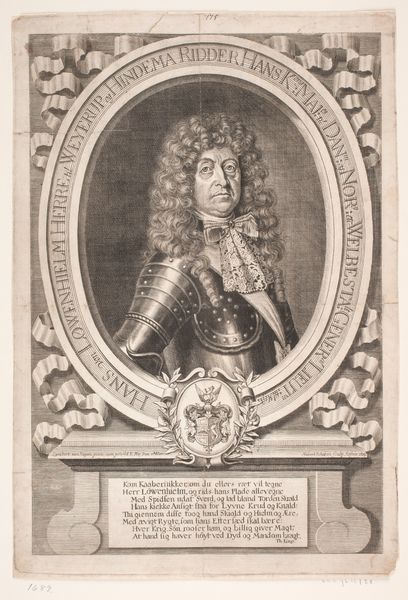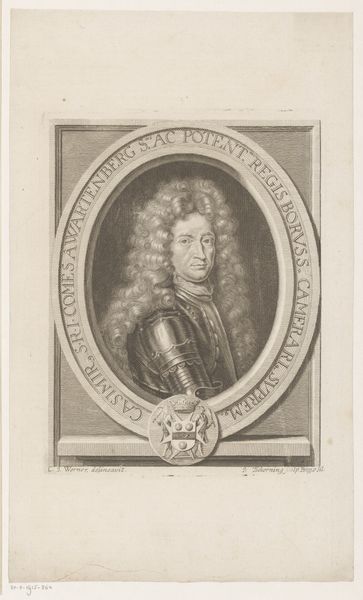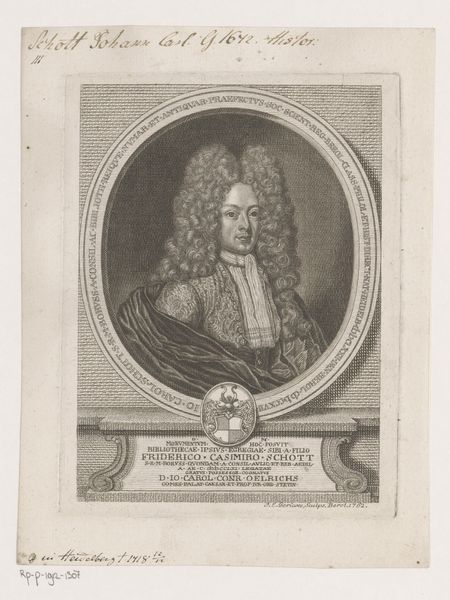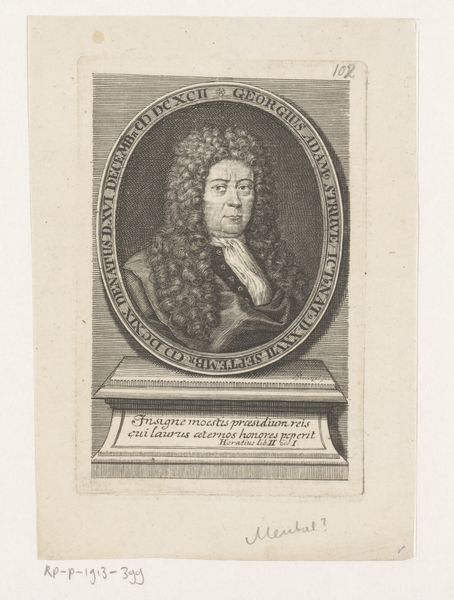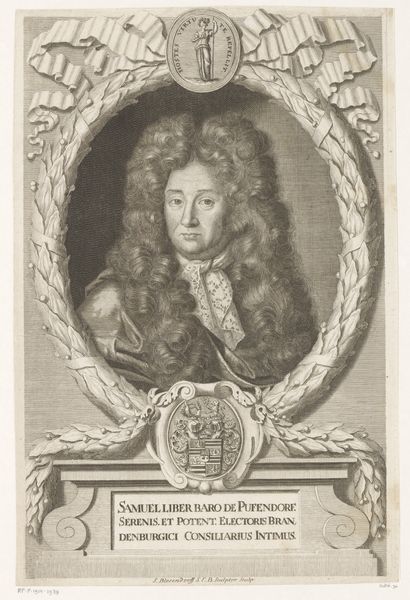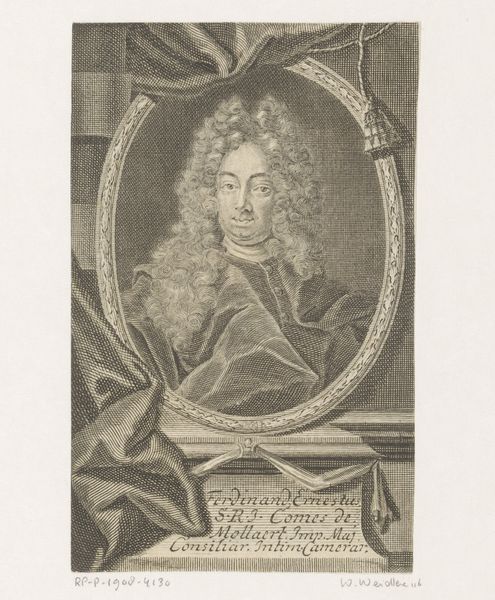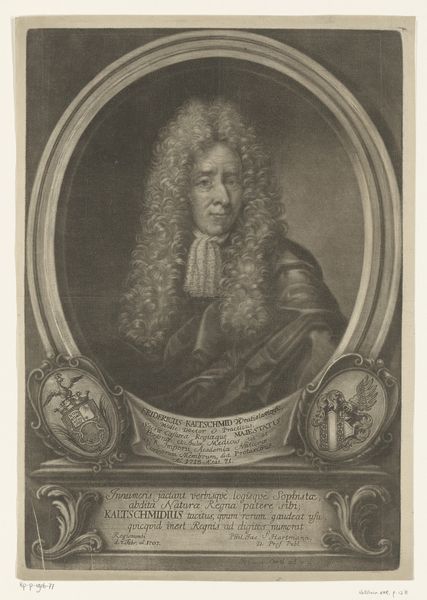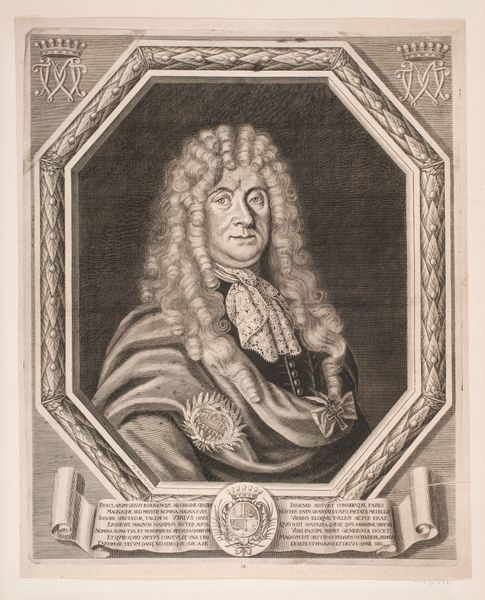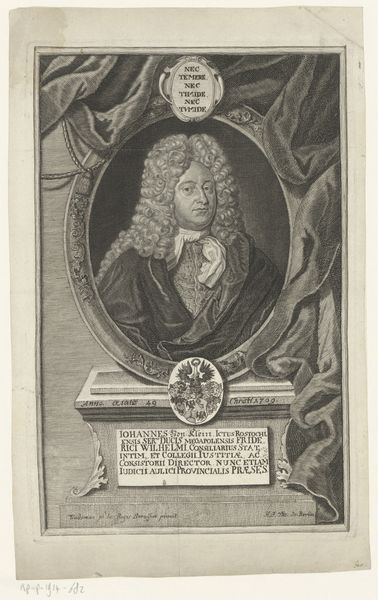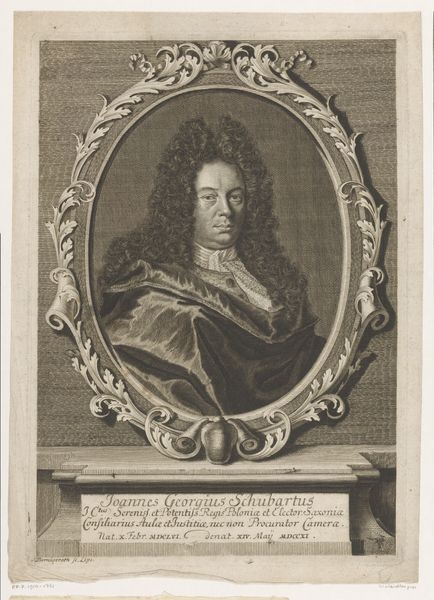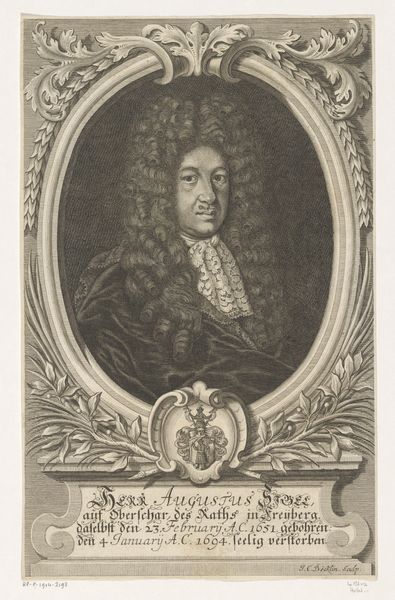
print, engraving
#
portrait
#
baroque
# print
#
engraving
Dimensions: 327 mm (height) x 211 mm (width) (plademaal)
Editor: Here we have Hubert Schaten's 1695 engraving, "Generaltolddirektør Edvard Kruse," currently held at the Statens Museum for Kunst. It's a pretty formal portrait, and I find the detail in the wig quite mesmerizing. What jumps out at you? Curator: Immediately, I'm struck by how this portrait reflects the complex intersections of power, identity, and representation within late 17th-century Denmark. How does this depiction of Kruse, a high-ranking official, reinforce or challenge the social norms of the time, especially regarding gender and class? Editor: Gender? I'm not sure I see it. Curator: Look closer at the exaggerated wig and the lace. These are markers of status but also hint at the performative aspects of masculinity within the aristocracy. How might we interpret this visual language in light of contemporary discussions around gender fluidity and performativity? Is this a presentation or perhaps a prison of identity? Editor: I see what you mean now. The lace and wig could be seen as quite excessive, even effeminate by today's standards. But it's also clearly communicating wealth and power, especially through the intricate details. Curator: Precisely. And what about the Latin inscription and Kruse's coat of arms? These elements function as tools that solidify his place within the power structure, and reinforce the ideologies legitimizing this system. Who is allowed into these rooms to see it, to feel empowered or demoralized by his portrait? Editor: So, it's not just a portrait of an individual, but also a reflection of the socio-political structures of the time. I guess thinking about the intended audience really shifts how we view this piece. Thanks for the insight. Curator: Absolutely. Engaging with art this way invites us to see the past as a living conversation that we can continue today.
Comments
No comments
Be the first to comment and join the conversation on the ultimate creative platform.

